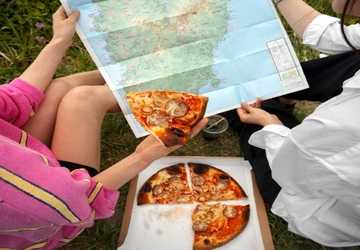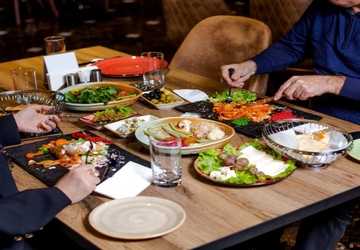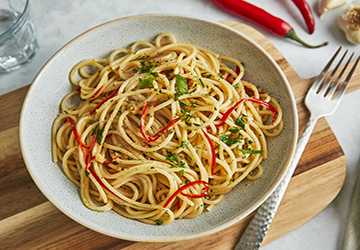How to Make the Most of Culinary Tourism: A Guide to Gastronomic Adventures
Culinary tourism, also known as food tourism, is a mouthwatering journey that tantalizes the taste buds and opens up a world of culinary experiences. It's a delightful way to explore the cultural diversity of different regions, as food is often an integral part of a community's identity. From street food stalls in Bangkok to Michelin-starred restaurants in Paris, culinary tourism offers an opportunity to savor the world's flavors.

1. Do Your Homework: Research the Destination
Before embarking on a culinary adventure, it's essential to do your homework. Research the destination you plan to visit and familiarize yourself with its culinary traditions, iconic dishes, and renowned food markets. You can start by reading travel guides, watching food documentaries, and checking out blogs and websites focusing on food and travel.
Understanding the local cuisine and food culture will enhance your culinary experience.
2. Embrace Local Flavors
Don't stick to what you know when exploring a new destination. Instead, be adventurous and try the local dishes. After all, culinary tourism is all about experiencing new flavors. From the spicy curries of India to the delicate pastries of France, each place has its signature dishes you should not miss.
Local markets are an excellent place to start. Engage with locals, ask for their recommendations, and be open to trying things you might not have encountered back home. Who knows, you might discover a new favorite dish or ingredient you can bring back to your kitchen.
3. Take a Cooking Class
One of the best ways to immerse yourself in a destination's food culture is by taking a cooking class. Whether you're a seasoned chef or a kitchen novice, these classes offer hands-on experience and insights into the local culinary traditions. You'll learn about the ingredients, techniques, and flavors that make the cuisine unique.
Cooking classes often occur in charming settings such as traditional homes or local farms, providing a genuine experience.
4. Explore Food Markets
Food markets are a vibrant hub of culinary activity and an essential stop for any culinary traveler. Whether it's the bustling bazaars of Istanbul, the colorful markets of Mexico City, or the iconic Borough Market in London, these places offer a feast for the senses. You can sample local snacks, buy fresh produce, and witness the heart of a city's food culture.
Strolling through food markets is an excellent way to get a taste of the local cuisine, and you can also pick up unique ingredients and spices to take home as souvenirs. Don't forget to bring your camera; the vibrant colors and bustling atmosphere make for fantastic photo opportunities.
5. Seek Recommendations from Locals
While guidebooks and online reviews are valuable resources, the most authentic culinary experiences often come from recommendations by locals. Strike up conversations with the people you meet during your travels – taxi drivers, hotel staff, shopkeepers, and fellow diners. Sometimes, the hole-in-the-wall restaurant with a line out the door serves the most extraordinary dishes. Locals know the hidden gems and can guide you to them.
6. Balance Fine Dining with Street Food

Culinary tourism isn't just about high-end restaurants; it's also about embracing street food and local delicacies. Street food is often where you'll find some of the most authentic and delicious dishes. Whether it's takoyaki in Osaka, empanadas in Buenos Aires, or banh mi in Hanoi, street food represents the culinary heartbeat of a city.
Balancing fine dining experiences with street food adventures is a must. While Michelin-starred restaurants offer exquisite dishes and elegant settings, street food allows you to connect with the everyday life of a destination.
7. Be Mindful of Food Safety
While indulging in culinary tourism, it's crucial to prioritize food safety. Be cautious of street vendors who may not maintain proper hygiene standards, and choose places that seem clean and busy with locals. Avoid eating raw or undercooked food that might pose health risks.
Another aspect to consider is water safety. In some countries, it's advisable to drink bottled water or beverages without ice to prevent waterborne illnesses. Researching and taking precautions will help you enjoy your culinary adventure without unwanted health issues.
8. Document Your Culinary Adventures
Take the time to document your culinary adventures, whether it's through photographs, a travel journal, or a food blog. Sharing your experiences with others preserves your memories and inspires fellow travelers to explore the world of food.
Photographs of your meals, the places you visit, and the people you meet can be a visual feast for your friends and family. Writing about your culinary experiences in a travel journal or starting a food blog allows you to delve deeper into the nuances of each dish and the stories behind them.
9. Respect Local Customs and Etiquette
Culinary tourism isn't just about savoring flavors; it's also about respecting the customs and etiquette of the places you visit. Every culture has its own dining traditions and social norms. It's essential to be aware of these and follow them to show respect to the locals and enhance your cultural experience.
10. Bring Back Culinary Souvenirs
No culinary journey is complete without bringing back souvenirs that capture your travels' essence. Consider purchasing local spices, condiments, or ingredients unique to the region. These culinary souvenirs will remind you of your journey and allow you to recreate some of the dishes you loved when you return home.
Conclusion:
Culinary tourism is a delectable way to explore the world and offers an opportunity to savor the flavors of different cultures. You can make the most of your gastronomic adventure by researching, embracing local flavors, taking cooking classes, and exploring food markets. Engaging with locals, documenting your experiences, and respecting local customs enhance cultural immersion.
Balancing fine dining with street food, practicing food safety, and bringing back culinary souvenirs ensure a well-rounded experience. Joining food and wine tasting tours, participating in food festivals, and planning for dietary restrictions add depth to your culinary journey.


